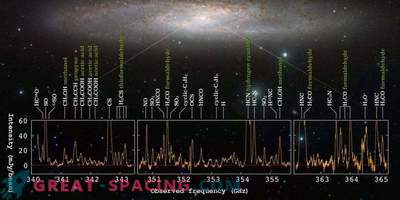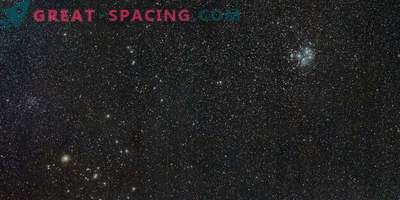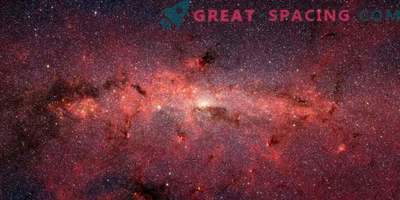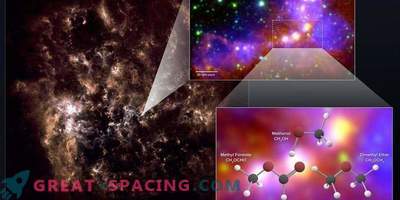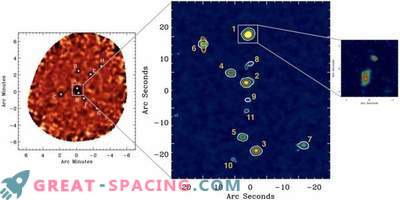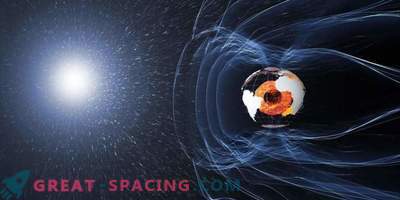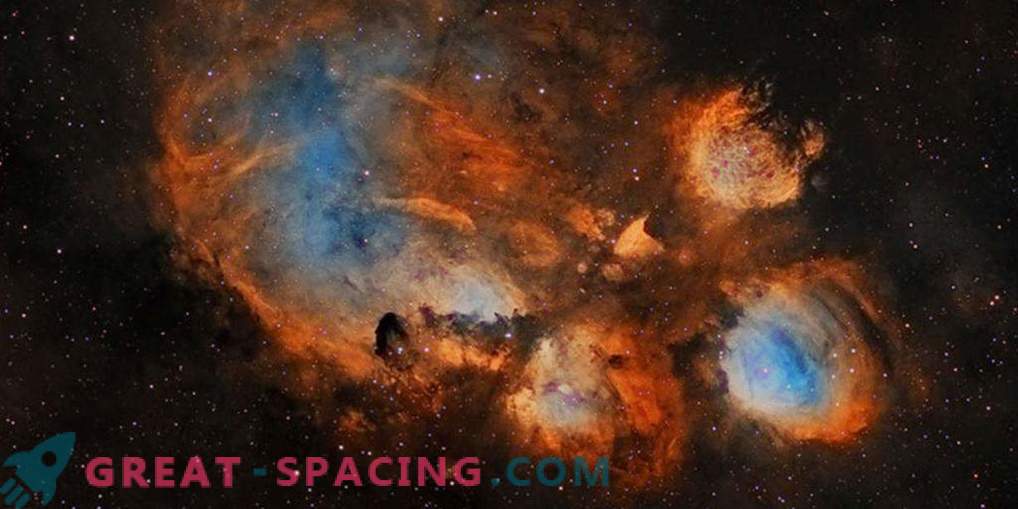
ALMA's large submillimeter array has set up another new channel for receiving signals from space. Using high-frequency receivers, scientists received 695 radio signals for various molecules, including simple sugar. For the study used a massive zone of formation of stars. These are the first ALMA scientific results, providing a promising future for high-frequency observations.
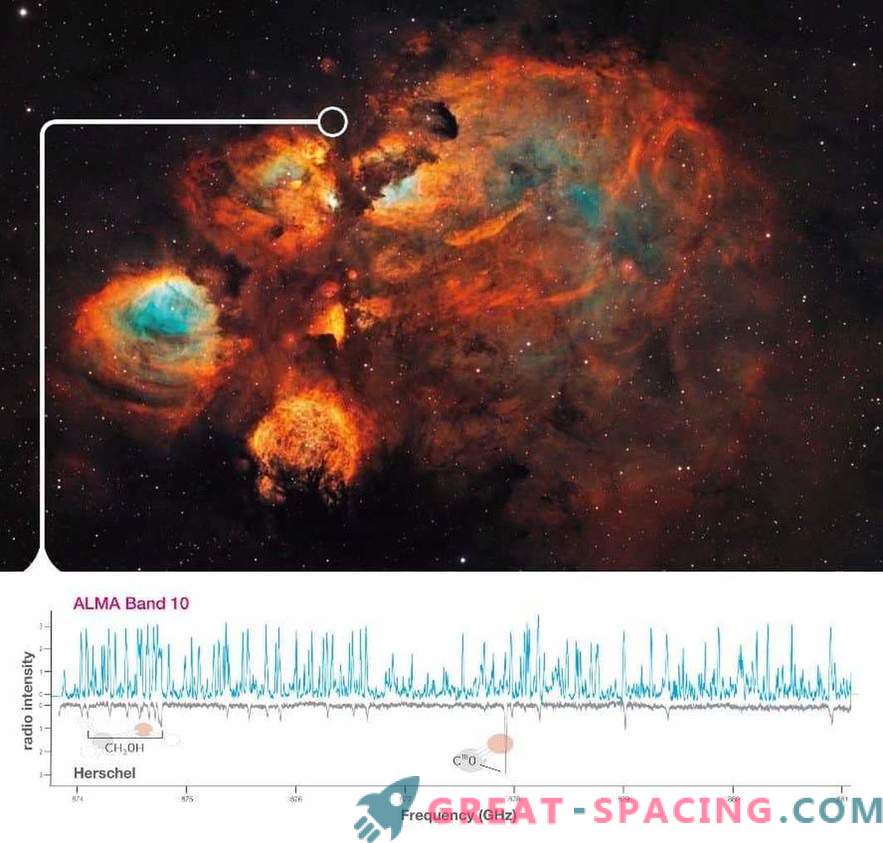
The image of the territory of the star-shaped formation of NGC 6334 I (Cat's Paw Nebula), obtained by the Hubble Space Telescope (above) and high-frequency radio spectrometers (below). The blue line shows the spectral lines from ALMA, and the gray line - the Herschel ESA observatory. ALMA observations provided 10 times the spectral lines.
As various radio stations on Earth broadcast different information, so the frequencies of radio waves from space contain different data about the environment and the chemical composition of the source. ALMA 10 receivers (787-950 GHz) - the highest frequency band. It was a difficult group to observe, not only for ALMA, but also for other terrestrial radio telescopes. A team of scientists studied NGC 6634 I - a cloud of massive stars born in the Cat's Paw Nebula, at a distance of 4300 light years from Earth. NGC 6634 I was previously observed at this frequency using the Herschel ESA space observatory. At that time, 65 molecular emission lines were found, but in ALMA they recorded 695. The molecules found include methanol, ethanol, methylamine and glycolaldehyde, the simplest molecule associated with sugar. The latter molecule was previously found elsewhere in space, but the clarity of ALMA's vision increases the possibility that new observations will clearly see the distribution of different molecules in space.
